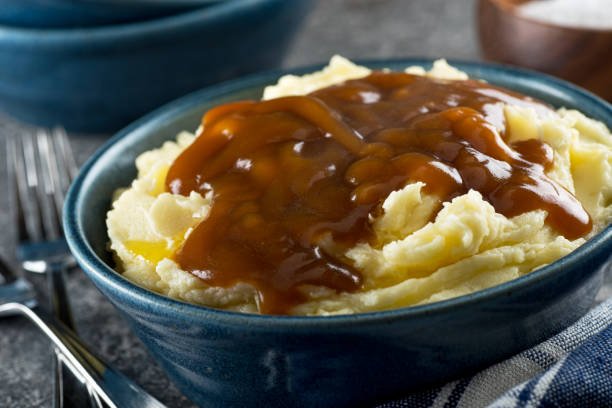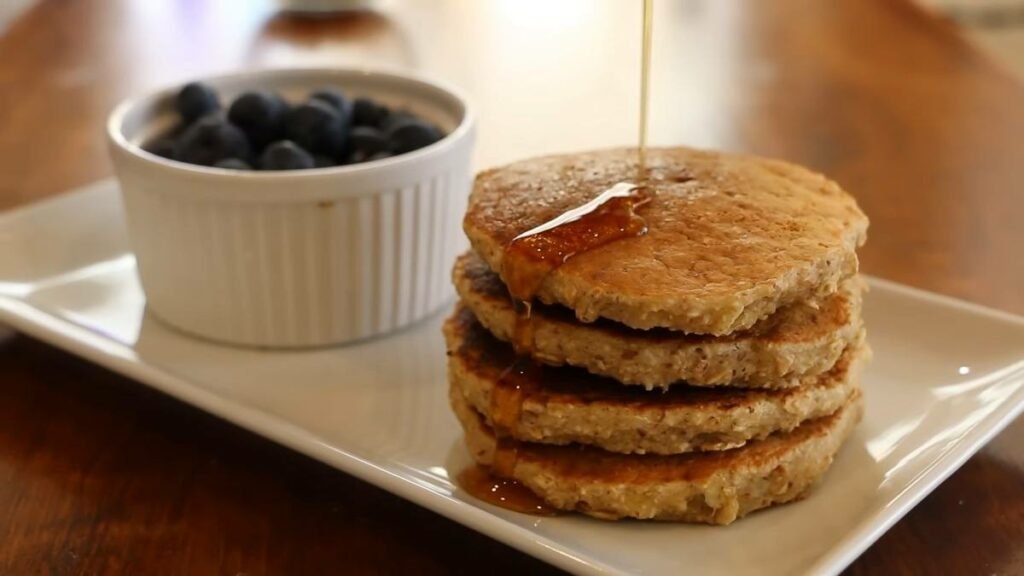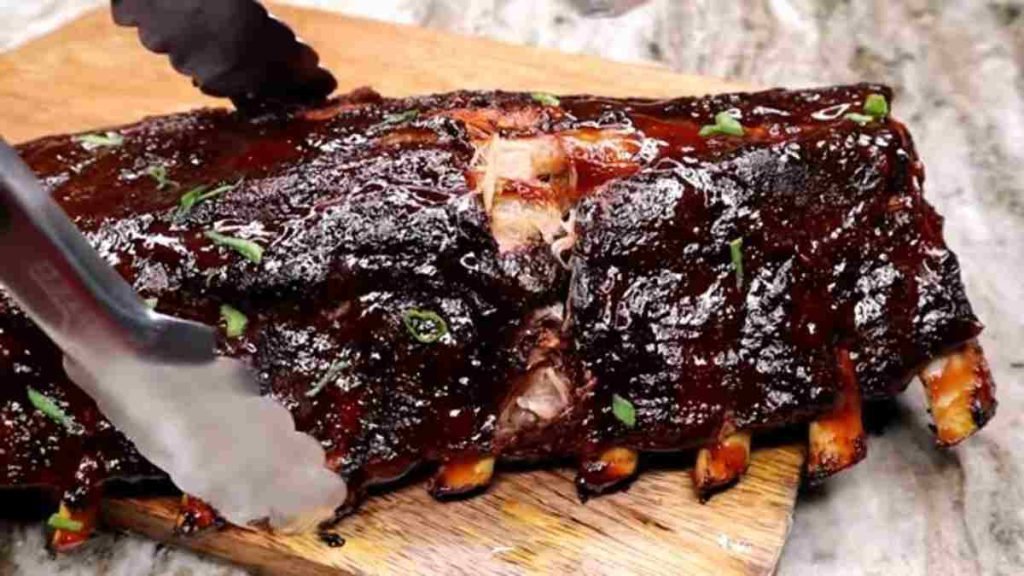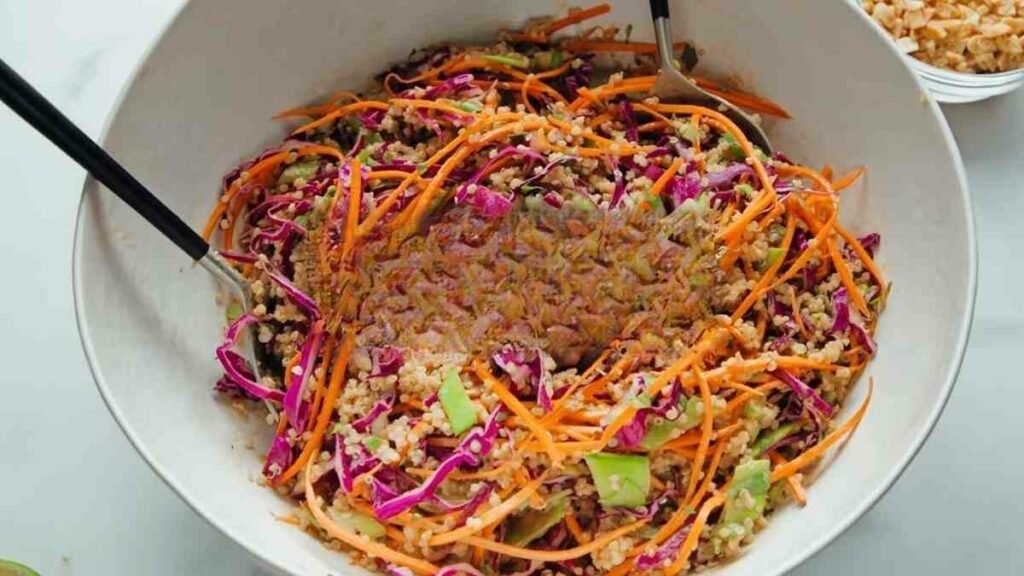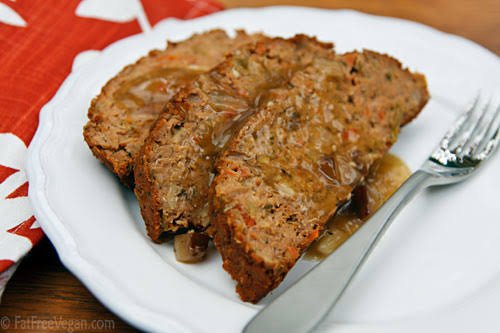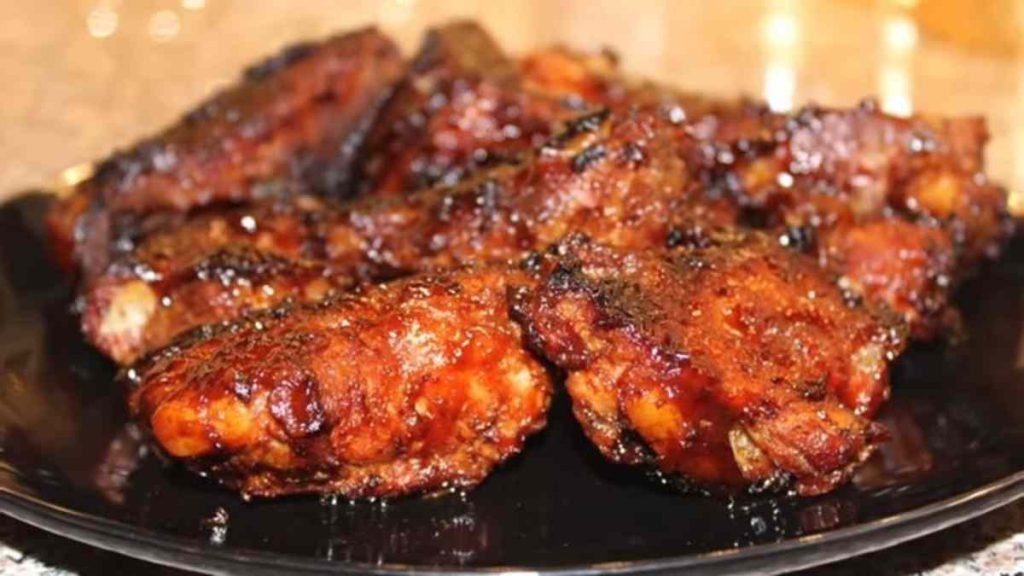Baklava itself has a long history, with roots in the Middle East and the Ottoman Empire. The dish has evolved over centuries and is now enjoyed in various forms across the world.
And it holds cultural significance in many Middle Eastern and Mediterranean cultures. It is often associated with celebrations, holidays, and special occasions, making it a popular treat during festive times.
Many families have their recipes and methods for making this delectable treat, passing down the tradition from one generation to the next and this blog post is a detailed guide on how I prepare mine and every other thing you should know.
And towards the end of the blog post are answers to possible questions you might want to ask.

Baklava With Pistachios and Walnuts Recipe
Equipment
- Baking dish
- Pastry brush
- Sharp knife
- Saucepan
- Mixing bowls
- Oven
- Cooling Rack (Optional)
- Airtight container
Ingredients
- Filo Dough Sheets: Approximately 1 pound (450 grams)
- Walnuts: 2 cups, finely chopped
- Almonds: 1 cup, finely chopped
- Pistachios: 1 cup, finely chopped
- Unsalted Butter: 1 cup (2 sticks), melted
- Sugar: 1 cup, granulated
- Ground Cinnamon: 2 teaspoons
- Ground Cloves (optional): 1/2 teaspoon
- Lemon Juice: 1 tablespoon, freshly squeezed
- Water: 1 cup
- Honey: 1 cup
- Vanilla Extract (optional): 1 teaspoon
- Lemon Zest (optional): Zest from 1 lemon
Instructions
- Thaw the filo dough according to package instructions if frozen. Ensure it is at room temperature before use.
- Preheat your oven to 350°F (175°C).
- In a bowl, mix the finely chopped walnuts, almonds, and pistachios.
- In a separate bowl, combine the granulated sugar, ground cinnamon, and ground cloves (if using).
- Brush the bottom and sides of a 9×13-inch baking dish with melted butter.
- Place a sheet of filo dough in the baking dish and brush it lightly with melted butter. Repeat with 10 more sheets of filo dough, brushing each sheet with butter.
- Sprinkle a generous amount of the nut filling over the layered filo dough.
- Layer 10 more sheets of filo dough, brushing each sheet with melted butter as before.
- Repeat steps 7 and step 8 until all the nut filling is used.
- Cut the layered baklava into diamond or square-shaped portions using a sharp knife.
- Place the baking dish in the preheated oven and bake for 45-50 minutes, or until golden brown and crispy.
- While the baklava is baking, prepare the syrup. In a saucepan, combine water, honey, granulated sugar, lemon juice, and optional vanilla extract. Bring to a boil, then let it simmer for about 10 minutes until the syrup thickens slightly. Remove from heat.
- Once the baklava is out of the oven, immediately pour the warm syrup evenly over the cut portions. Optional: Sprinkle lemon zest over the baklava.
- Allow the baklava to cool completely in the baking dish, allowing it to absorb the syrup and soften.
- Serve the baklava at room temperature and enjoy the sweet, nutty layers of this delectable dessert.
Video
Tips on Preparing Perfect Baklava With Pistachios
Perfect baklava with pistachios requires attention to detail and a careful balance of flavours and textures.
Pistachio Selection
Choose roasted, unsalted pistachios for a rich, nutty flavour. Ensure they are finely chopped but still have some texture. The pistachios contribute significantly to the overall taste and texture of the baklava.
Phyllo Dough Handling
Handle the phyllo dough with care. Thaw it in the refrigerator if it’s frozen, and keep it covered with a damp cloth while working to prevent it from drying out. Work quickly but gently when layering the sheets.
Butter Application
Brush each layer of phyllo dough generously with melted butter. This not only adds flavour but also helps achieve the desired flakiness. Be sure to butter the entire surface, including the edges.
Layering Technique
Aim for even layers of phyllo and pistachios. Distribute the chopped pistachios evenly across each layer to ensure a balanced taste in every bite. Consistency in layering is key to a uniform texture.
Cutting Before Baking
Before baking, score the baklava into the desired serving portions with a sharp knife. This will make it easier to cut into neat pieces after baking. Be mindful not to cut all the way through; the layers should remain connected.
Baking Temperature and Time
Follow the recommended baking temperature and time in your recipe. Baklava is usually baked at a moderate temperature until golden brown. Keep an eye on it during the last few minutes to prevent over-browning.
Syrup Absorption
Allow the baklava to cool for a few minutes after baking before pouring the syrup. The syrup should be warm, and the baklava slightly cooled to aid absorption. Pour the syrup evenly over the entire surface, ensuring it reaches all the cut edges.
Letting it Rest
After adding the syrup, let the baklava rest for several hours or overnight before serving. This allows the layers to fully absorb the syrup, resulting in a moist and flavorful dessert.
Presentation
When ready to serve, cut along the pre-scored lines. Use a sharp knife for clean edges. Arrange the pieces on a serving platter, and for an extra touch, sprinkle finely chopped pistachios on top for decoration.
What To Take With Baklava and Pistachios
Quite a few number of dishes can help get the best out of your Baklava.
Greek or Turkish Coffee
Enjoying baklava with a strong and aromatic Greek or Turkish coffee is a classic combination. The flavours of the coffee complement the sweetness of the baklava, creating a delightful contrast.
Tea
Opt for a fragrant and slightly robust tea, such as black or chai tea. The warmth of the tea can be a comforting contrast to the richness of the baklava.
Mint Tea
If you prefer a lighter option, consider serving baklava with a cup of refreshing mint tea. The minty notes can provide a palate cleanser between bites of the sweet and nutty dessert.
Rose Water Lemonade
Create a refreshing rose water lemonade to pair with baklava. The floral notes of rose water complement the sweetness of the dessert, while the tartness of lemonade adds a nice balance.
Vanilla Ice Cream
Serve a scoop of high-quality vanilla ice cream alongside baklava. The cool and creamy texture of the ice cream complements the flakiness of the pastry and adds a luxurious element to the dessert.
Yoghurt
A dollop of thick, creamy Greek yoghurt can provide a tangy and creamy contrast to the sweetness of baklava. It’s a traditional pairing in some Middle Eastern cuisines.
Fresh Fruits
Arrange a plate of fresh fruits, such as berries, figs, or sliced oranges, to balance the sweetness of the baklava. The natural juiciness and acidity of the fruits can cut through the richness.
Whipped Cream
For a lighter option, consider serving baklava with a side of lightly sweetened whipped cream. The airy texture of the whipped cream complements the dense layers of the pastry.
Pomegranate Seeds
Sprinkle some fresh pomegranate seeds over the baklava. The burst of juicy and slightly tart flavour from the seeds adds a delightful contrast.
Chopped Nuts
If you enjoy an extra nutty crunch, offer a bowl of additional chopped pistachios or mixed nuts on the side. Guests can sprinkle these on top of their baklava for added texture.
Honey Drizzle
Drizzle a bit of honey over the baklava just before serving for an extra touch of sweetness. The floral notes of honey can complement the flavours in the dessert.
How Do I Cut Baklava Without Breaking the Layers?
To cut Baklava without breaking the delicate layers, follow these steps for a precise and clean presentation. First, allow the freshly baked Baklava to cool for about 1 to 2 hours, ensuring the layers have set. Once it reaches room temperature, use a sharp knife with a thin blade, preferably a serrated one, to make the cutting process more manageable.
Dip the knife in hot water and wipe it dry before each cut. The warmth helps the knife glide through the layers without causing them to stick or break. When cutting, apply gentle, even pressure and use a sawing motion rather than pressing down forcefully. This technique prevents the layers from compressing and maintains the distinct flakiness of each sheet.
To achieve clean and uniform pieces, cut the Baklava into squares or diamonds, following the pattern of the initial cuts made before baking. This method, combined with the warmed, sharp knife, ensures that you can enjoy the intricate layers of Baklava without compromising their delicate structure.
How Do I Prevent the Filo Dough From Drying Out?
Preventing filo dough from drying out is crucial for successful pastry preparation. To maintain its pliability, work quickly and cover the unused filo sheets with a slightly damp kitchen towel. The moisture from the towel creates a humid environment, preventing the filo from drying and becoming brittle.
When handling individual sheets, keep the stack covered with plastic wrap, wax paper, or another damp towel to shield them from air exposure. As you work, periodically check and re-moisten the covering towel to ensure it stays slightly damp. If you notice any edges starting to dry, trim them off before use.





